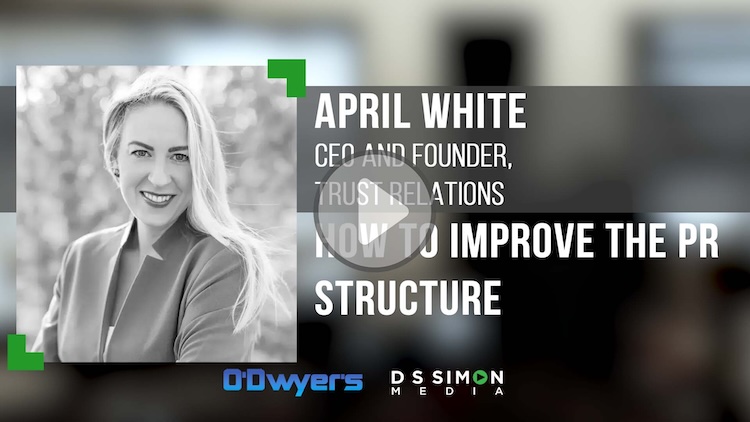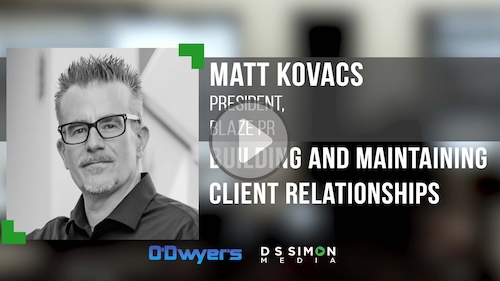"We all want to talk smart; we want to write smart; we want to communicate in a smart manner, but a lot of times industry jargon can get in the way, and it can be more confusing than more clear for an audience," Story Partners SVP Carrie Blewitt tells Doug Simon.
To break down some of that jargon and get your point across, Blewitt suggests abiding by what she calls the grandma rules—"I like to say, how would you describe this announcement or this piece of news or this new technology to your grandmother or to a family member? And that way you just use plain English to describe it."
As communicators develop their messaging, she says "you really want to make sure it's digestible, it's easy to understand. And, you know, if you have to use an important term or you're introducing a new technology, for example, certainly use that, but you want to make sure you're explaining it in a way that's really easy to understand and grasp. Because if an editor or a reporter that you're pitching doesn't understand it, it's going to be hard for them to explain it to their audience or to their readers."
In a business-to-business environment, she tells Simon, it's essential to balance that need for clarity with the need to come across as a groundbreaker in your field.
If you're going to describe a product as groundbreaking or innovative or first of its kind, "you want to make sure you back it up with facts and figures. Or talk about why it is groundbreaking and explain it. So, it's okay to use those terms, but make sure you're explaining why."
Another key jargon-avoiding strategy is to focus on what the benefits are for what your product or service is offering to the community and marketplace.
In addition to steering clear of jargon, Blewitt also advisers communicators to keep things brief. "There's so much coming at us today, communications wise, so much news to watch and newsletters to read, and information coming at us that people are becoming a little more brief and using smart brevity in their communications, because attention spans are just really short."
But ultimately, she tells Simon that it all comes down to helping editors and reporters "understand in plain English what you're what you're pitching, what the company's all about, what you're selling... so that they can write a story that their readers are going to grasp and really understand and ultimately want to know more about."
View all of the interviews in the “PR's Top Pros Talk” series. Subscribe to get notified when new episodes are available.
Interested in taking part? Contact Doug Simon at [email protected]
D S Simon Media helps clients get their stories on television through satellite media tours and by producing and distributing content to the media. The company also produces live social media events.










 Have a comment? Send it to
Have a comment? Send it to 
No comments have been submitted for this story yet.